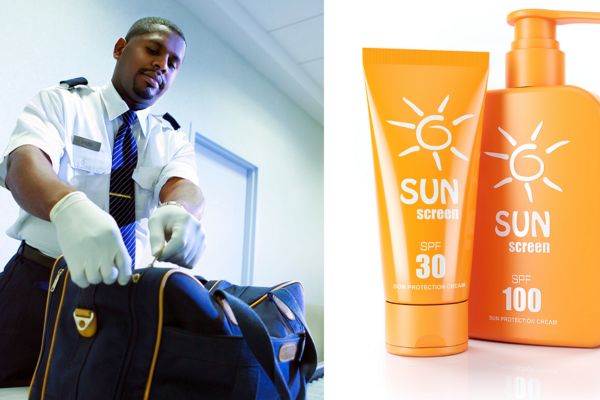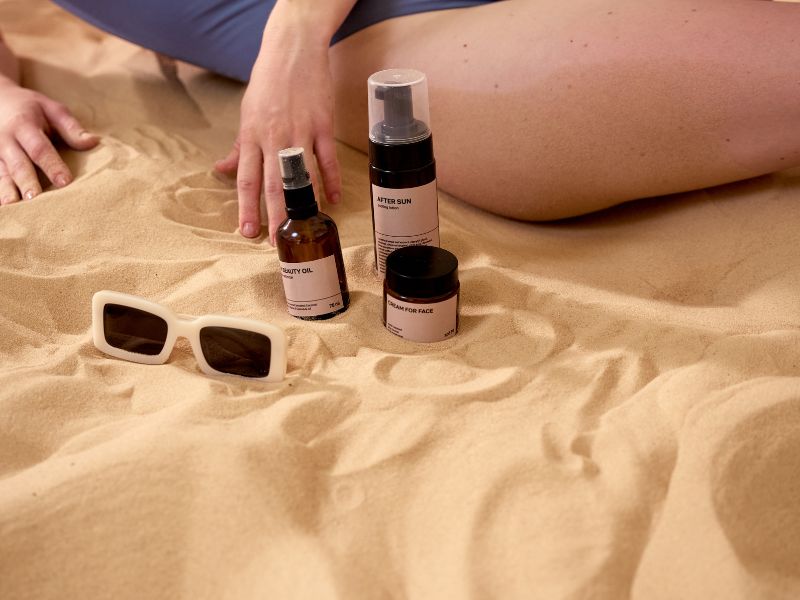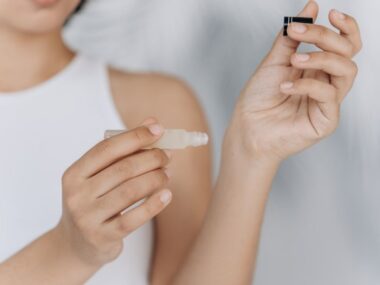Traveling to sunny destinations often requires travelers to bring sunscreen, especially during summer getaways or beach vacations. Aerosol sunscreens have become a popular choice for their easy application, but questions arise regarding whether they can be packed in checked luggage on flights. The rules around aerosols in luggage are influenced by safety and transportation regulations, which vary slightly depending on where the item is packed. This article explains everything you need to know about bringing aerosol sunscreen in a checked bag, including TSA regulations, safety tips, and alternatives.
Can You Bring Aerosol Sunscreen On A Plane Checked Bag
The Transportation Security Administration (TSA) has specific guidelines for carrying liquids, aerosols, and gels on airplanes. For most aerosol sunscreens, the primary concern is their flammability and pressurization, which can become hazardous during air travel. In general, the TSA allows passengers to pack aerosol sunscreen in checked baggage but limits the container size and the cumulative volume of aerosols permitted. According to the TSA:
- Checked Baggage: Each aerosol container must be 18 ounces (510 grams) or less, with a total aerosol allowance of 70 ounces (2 liters) per passenger in checked bags.
These limits are designed to ensure safety on board without compromising the comfort or convenience of travelers needing personal care items like sunscreen. Adhering to these guidelines is essential to avoid confiscation or other issues at the airport.
Why Are Aerosols Regulated on Airplanes?
Aerosol products are regulated on flights due to potential safety risks associated with their pressurized and often flammable contents. Aerosols typically contain a propellant to create a fine mist for even application, but this pressurization can pose risks in high-altitude environments where temperature and air pressure fluctuate significantly. Because of these properties:
- Explosive Potential: Under extreme pressure or heat, aerosol cans can burst. Placing them in checked luggage, where temperature and pressure may vary, carries a higher risk.
- Flammable Propellants: Many aerosols, including sunscreen, contain flammable ingredients that make them sensitive to changes in temperature. By limiting the amount of aerosol allowed, the TSA helps reduce the chances of dangerous reactions during the flight.
Tips and Best Practices
To ensure your aerosol sunscreen is packed safely, here are some packing tips that can prevent accidental damage or leakage:
- Use a Protective Bag: Pack the aerosol in a resealable plastic bag. This not only keeps the rest of your belongings safe in case of leaks but also serves as an additional layer of protection.
- Wrap in Clothing or a Towel: Placing the aerosol can in between layers of clothing or a towel can add some cushioning and help it remain stable during transportation.
- Store Upright in a Side Compartment: Placing the can upright and in a side compartment of your luggage minimizes the chance of rolling and jostling, which can damage the container.
By following these steps, you minimize the risk of leaks or damage, keeping your belongings safe and ensuring your sunscreen remains in good condition for your destination.
Alternatives to Aerosol Sunscreen for Air Travel
For travelers who want to avoid the hassle of aerosol regulations, there are alternative forms of sunscreen that are TSA-friendly and effective. Each type has its own benefits, depending on your personal preferences and travel needs:
- Lotion Sunscreen: Standard lotion sunscreens are easier to transport, as they aren’t pressurized. Many lotion sunscreens are available in TSA-approved travel sizes, making them convenient for carry-on and checked bags alike.
- Stick Sunscreen: Stick sunscreens are solid, so they don’t count toward the TSA’s liquid and aerosol limits. They’re compact and easy to reapply, especially for quick touch-ups on the go.
- Powder Sunscreen: Powder-based sunscreens are gaining popularity as a lightweight, non-liquid alternative that avoids aerosol restrictions altogether. These are especially convenient for touch-ups and can be safely packed in any luggage.
Choosing an alternative to aerosol sunscreen allows for more flexibility with TSA and FAA regulations, giving you peace of mind and reducing the risk of confiscation at security checkpoints.
Common Mistakes When Packing Aerosol Sunscreen
Packing aerosol sunscreen for air travel can be confusing, and travelers often make mistakes that result in unnecessary complications. Here are some common mistakes to avoid:
- Exceeding the Size Limit: Remember that each aerosol can be 18 ounces (510 grams) or smaller, with a total limit of 70 ounces (2 liters) for all aerosol products in your checked bag.
- Packing Damaged or Expired Aerosol Cans: Damaged cans may be more likely to leak or explode. Additionally, some airlines have policies against carrying expired items, so check the expiration date before packing.
- Ignoring TSA Rules for International Flights: If you’re traveling internationally, check the rules of the destination country, as some countries may have stricter regulations than the TSA or FAA.
By avoiding these mistakes, you can ensure a smoother journey and minimize the likelihood of facing issues at the airport.
What to Expect if Your Aerosol Sunscreen Exceeds the Limit
If you inadvertently exceed the allowed aerosol limit, TSA officers or airline staff may confiscate your sunscreen or ask you to discard excess items. This situation is preventable by carefully reviewing TSA and airline rules before arriving at the airport. Here’s what you can expect:
- Inspection by TSA or Airline Staff: During luggage screening, TSA may flag items that exceed size or volume limits, and security officers have the authority to remove them.
- Confiscation and Disposal: Confiscated items are typically discarded or handed over to local disposal facilities.
- Potential Delays: Packing oversized or prohibited items can result in delays, which can be stressful if you’re rushing to catch a flight.
To avoid these situations, double-check the size and quantity of your aerosol sunscreen before traveling and consider alternatives if necessary.
Additional Travel Tips for Sun Protection
Aside from bringing aerosol sunscreen, there are several strategies travelers can adopt to stay protected from the sun without any travel-related concerns:
- Bring a Wide-Brimmed Hat and Sunglasses: A hat and sunglasses add extra protection from UV rays, reducing your reliance on sunscreen alone.
- Choose High-SPF, Broad-Spectrum Sunscreen: Selecting a high SPF ensures that you’re well-protected even with infrequent reapplications.
- Reapply Sunscreen as Needed: If your sunscreen is packed in checked baggage, remember to reapply as soon as you reach your destination to avoid sunburn.
These additional sun protection measures can be especially helpful during lengthy layovers or outdoor activities immediately following your flight.
Conclusion
Aerosol sunscreen is allowed in checked baggage, provided it meets TSA and FAA regulations on size and quantity. By understanding these guidelines, packing aerosol sunscreen safely, and considering alternatives, you can travel confidently and stay sun-protected at your destination. Making these informed choices not only keeps your travel hassle-free but also ensures you remain prepared for any climate.






